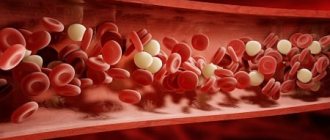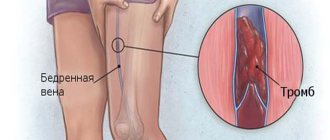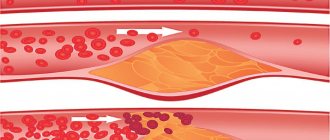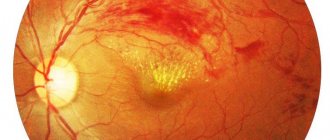What it is
Definition of this disease: mesenteric thrombosis is a violation of blood circulation in the mesenteric vessels due to their blockage. Occlusion leads to acute ischemia, followed by the development of intestinal infarction and peritonitis.
Often the upper branches of the blood vein are damaged.
Pre-elderly and elderly people are at risk. They may have a predisposition in the form of a blood supply disorder, neoplasm, surgery or injury.
Forms and stages
According to the course format, chronic and acute are distinguished.
It can be localized only in arteries, veins, or have a mixed type. First, blood flow is disrupted in the mesenteric arteries, then in the veins. The upper branches suffer more than the lower branches. According to the degree, venous mesenteric thrombosis is divided into 3 stages:
- Compensatory. It is considered a chronic form, blood circulation is carried out due to healthy vessels.
- Subcompensatory. Partial blood supply to the intestinal tract is maintained.
- Decompensation. A severe stage characterized by irreversible consequences. There is no blood flow in the intestines, which leads to the development of a heart attack. The first phase is 2 hours, during which time there is a chance to reverse the process. After 4 hours, the next one occurs - gangrenous damage to the organ develops. This often ends in disaster.
The clinical picture of mesenteric thrombosis and symptoms can be different and make themselves felt not immediately, but some time after the development of the disease.
What vessels are affected by mesenteric thrombosis?
The mesentery is a connective tissue cord through which the intestine is attached to the posterior wall of the peritoneum. It prevents intestinal loops from twisting.
The intestine is supplied with blood by the superior and inferior mesenteric arteries. Thrombosis occurs in the superior mesenteric artery more often, accounting for up to 90% of all cases of this pathology. It supplies blood to most of the organ.
This vessel feeds the following departments:
- small, ascending colon, cecum;
- hepatic flexure;
- two thirds of the transverse colon.
Therefore, when thrombosis occurs, severe lesions develop.
The inferior mesenteric artery supplies blood to the remaining sections. These include:
- colon descending;
- left third of the transverse colon;
- sigmoid colon.
This artery accounts for up to 10% of all cases of intestinal vascular thrombosis.
Why does it occur
A trombone mass can form due to excessive blood clotting. Hypercoagulability can be acquired, genetic or congenital.
The inner layer of the blood vessel wall takes part in various body processes. These cells synthesize substances that give the command to trigger coagulation.
In a normal state, they are fenced off from the bloodstream by walls; they penetrate into it when the cells are damaged. This can happen due to injury and a gap in the body's all-round defense against aggressive factors.
Against the background of trauma, surgery and other influences, cell walls become permeable. Small blood clots begin to form in it, which subsequently clog it.
Stagnation of blood leads to its stratification into fractions, which, when sticking together, form trombone masses. The reason may lie in insufficient activity or oncological pathologies.
It turns out to be a vicious circle: due to impaired blood circulation, traffic jams form.
Neoplasms in the abdominal area and interlacing of veins are also causes of intestinal infarction or ischemia. Against the background of compression of the arterial vein and blocking of natural blood flow.
Causes
Factors in the development of the pathological process are very different. If we talk about common ones:
- Injuries of the lower extremities. Which are accompanied by a violation of the anatomical integrity of blood vessels. Depending on the characteristics of the body and the circulatory system, the formation of a hematoma is likely. Over time, it resolves, but a full-fledged blood clot may develop.
The separation of such a formation leads to its migration and blockage of the mesenteric and pulmonary arteries. Both options are equally dangerous.
- Myocardial infarction. Necrosis of a fragment of the muscular layer of the heart. A blood clot may form.
- Staying in one position for a long period of time. Immobilization. Thrombosis of mesenteric arteries and veins develops especially often in bedridden patients. Preventive measures have not been developed for this category of patients; mainly preventive measures come down to the use of medications.
- Taking a number of medications. Oral contraceptives (birth control pills), cytostatics, immunosuppressants, and some psychotropic drugs are especially dangerous.
- Pregnancy. Gestation is an unpredictable process. Thrombosis occurs in severe cases, but this is rather an exception to the rule. Blood thickening is often observed during pregnancy, which doctors pay attention to.
- Lipid metabolism disorders. Obesity.
- Diabetes mellitus and other endocrine diseases. Including thyroid or adrenal disorders.
- Bad habits. Smoking, alcohol abuse and others.
Mesenteric intestinal thrombosis develops as a result of a group of causes; identifying them plays an important role at the stage of prescribing therapy and further secondary prevention (prevention of relapses).
Why is it dangerous?
This disease can develop in any part, the scenario is as follows: blockage of a blood vessel - necrosis. The danger depends on what will be affected. So, thrombosis of the heart arteries or in the abdominal cavity is a heart attack. Parts of the brain - stroke.
This organ is located inside a membranous “sac” consisting of connective tissue. In another way, it is called mesentery or mesentery. Due to blockage of the venous arteries, doctors make this diagnosis.
Symptoms of the disease
The first thing a sick person will feel is paroxysmal abdominal pain. Over time, the pain will be constant and intensifying. The pain is of a girdling nature, the patient is unable to determine its exact location of condensation.
The next symptom indicating the occurrence of thrombosis is nausea and vomiting with blood clots. During the act of defecation, changes in the nature of the stool are noticed, namely, it becomes liquid with an admixture of blood.
The patient additionally experiences the following symptoms:
- Sudden changes in pressure in the arteries;
- Increased body temperature, possible chills;
- Cold sweat, pale skin;
- Bloating, sensation of abdominal hardness;
Even if all of the listed symptoms are present in the patient, a diagnosis should not be made without an additional examination by a doctor.
Evidence of a blood clot is low blood pressure and noticeable swelling in the upper pubic area of the abdomen, indicating that blood clots have accumulated inside.
Symptoms
First of all, it is necessary to emphasize the first, striking sign that cannot be ignored - acute, unbearable pain in the abdomen.
The location of the pain syndrome depends on which part of the circulatory system is damaged. The causes of thrombosis of mesenteric vessels have already been discussed, so you need to know in what form the symptoms already tend to manifest themselves:
- In the early stages: nausea, gag reflex, fever, diarrhea. There may be blood streaks in the stool.
- At later stages, the patient may complain of rare stools. This occurs due to the disappearance of the peristaltic reflex of the intestinal tract. That is, a wave-like contraction occurs, which promotes the movement of fecal matter.
To detect this disease, undergo an examination; you should not delay the visit, so as not to complicate your current condition.
When and who to contact
Seeing a doctor is most often postponed if the patient has vomiting, diarrhea, or abdominal pain. They can be confused with food poisoning.
Consult a doctor in the following cases:
- diarrhea gives way to constipation;
- lump below the navel;
- unbearable pain in the abdomen, up to a state of shock;
- The muscles of the anterior abdominal wall are tense.
This is treated surgically. The patient requires emergency care for thrombosis of the mesenteric vessels.
If you feel that your condition is getting worse, call emergency medical help immediately.
Diagnostics
It is important to distinguish this disease in time from appendicitis, performative duodenal ulcer, ruptured ovarian cyst, and ectopic pregnancy.
If thrombosis of mesenteric vessels is detected, diagnosis includes the following procedures:
- taking anamnesis;
- donation of blood, urine;
- coagulogram, angiography;
- Ultrasound examination of the abdominal cavity.
Laparoscopy is performed if the diagnosis cannot be established. The procedure is performed by a surgeon under anesthesia.
Rehabilitation after surgery
After surgery, you need to eat cereal and dairy products.
During the postoperative period, medical recommendations should be followed. It is strictly forbidden to lift weights and perform sports exercises. At first, the patient’s physical activity is limited as much as possible. Hygiene procedures are carried out in the shower; you cannot take a bath.
Particular attention is paid to the preparation of the diet. It includes cereals and dairy products. Fatty and heavy foods, fruits, vegetables and alcohol should be excluded. In order to prevent recurrent blood clots or thrombophlebitis, medications selected by a doctor are taken.
Treatment methods
Therapy depends on the time of the doctor’s report. This could be medication or surgery. But more often, people come in in extreme form, so treatment is impossible without a surgeon.
Medicines
Appropriate if thrombosis occurs in a chronic form. That is, blood circulation in the mesenteric veins is partially preserved.
Prescribe anticoagulants and disaggregation drugs for parenteral administration. The results of treatment are monitored through periodic blood and urine donations.
Surgery
It is performed for interstitial ischemia occurring in an acute form. Help is provided while the patient is being transported to the clinic. Every missed minute can lead to the death of the patient.
To alleviate the condition, the ambulance team resorts to the following actions:
- removing a blood clot from an area of the intestine;
- surgery on a damaged artery;
- resection of necrotic areas of the intestine;
- mixed type operation.
When the disease occurs at a late stage, surgical intervention is extremely difficult. Literally after 6-12 hours, the patient will be re-operated.
Clinical guidelines
Current clinical guidelines suggest the use of conservative therapy methods in the reversible stage of the disease.
Recommended:
- administration of direct anticoagulants to thin the blood;
- when it is possible to achieve an improvement in coagulogram parameters, the patient is transferred to thrombolytics, disaggregants, and indirect anticoagulants
With the reversible stage of intestinal ischemia, surgery can be avoided if it is performed on time.
Download national clinical guidelines “Acute vascular diseases of the intestine in adults.” All-Russian Surgical Forum, Russian Society of Surgeons, Russian Society of Angiologists and Vascular Surgeons, Russian Scientific Society of Specialists in X-ray Endovascular Diagnostics and Treatment. Moscow, April 6, 2020. Download the draft protocol (clinical guidelines) for the diagnosis and treatment of acute intestinal ischemia. Moscow, 2014. Download the article “Acute mesenteric ischemia: approaches to diagnosis and treatment”, 2017 Authors: Yaroshchuk S.A., Baranov A.I., Katasheva L.Yu., Leshchyshin Ya.M. GBUZ KO Novokuznetsk City Clinical Hospital No. 29, GBUZ KO Novokuznetsk City Clinical Hospital No. 1, Novokuznetsk State Institute for Advanced Training of Physicians - branch of the Federal State Budgetary Educational Institution of Further Professional Education RMANPO of the Ministry of Health of Russia, Novokuznetsk, Russia.
Prevention and prognosis
If a person begins to take timely preventive measures, this will help save life.
So, what needs to be done to maintain health.
- Get rid of nicotine and alcohol addiction. Start eating right and moving more, playing sports.
- Get examined every six months. Donate blood and urine.
- Completely treat intestinal pathologies.
If surgery was performed, follow the surgeon's recommendations. Even if you feel that it has become much better, do not start treatment, continue to the last course.
Conservative therapy
At the onset of the disease, conservative therapy is carried out. Therapeutic manipulations are aimed at reducing the process of blood clotting and normalizing blood flow. Drugs that affect blood viscosity are administered parenterally over two days.
They are administered every 6 hours for a total of 4 infusions per day. Heparin and its analogues are most often prescribed to thin the blood. Injections with antiplatelet agents and thrombolytics are also given. Drugs in these categories include Hemodez, Trental and Reopoliglyukin.
Forecasts
If the patient seeks medical help at stage 2-3, the chances of recovery are extremely low. The maximum level of survival is stage 1.
The blood clot is removed until necrosis has formed. A blood clot can clog any vein or artery; this is associated with severe intoxication of the body.
People who suffer from acute disorders of mesenteric circulation at the stage of decompensation die without surgical intervention. Therefore, seeking medical help and undergoing an examination is necessary. Then the chances of recovery increase several times.











